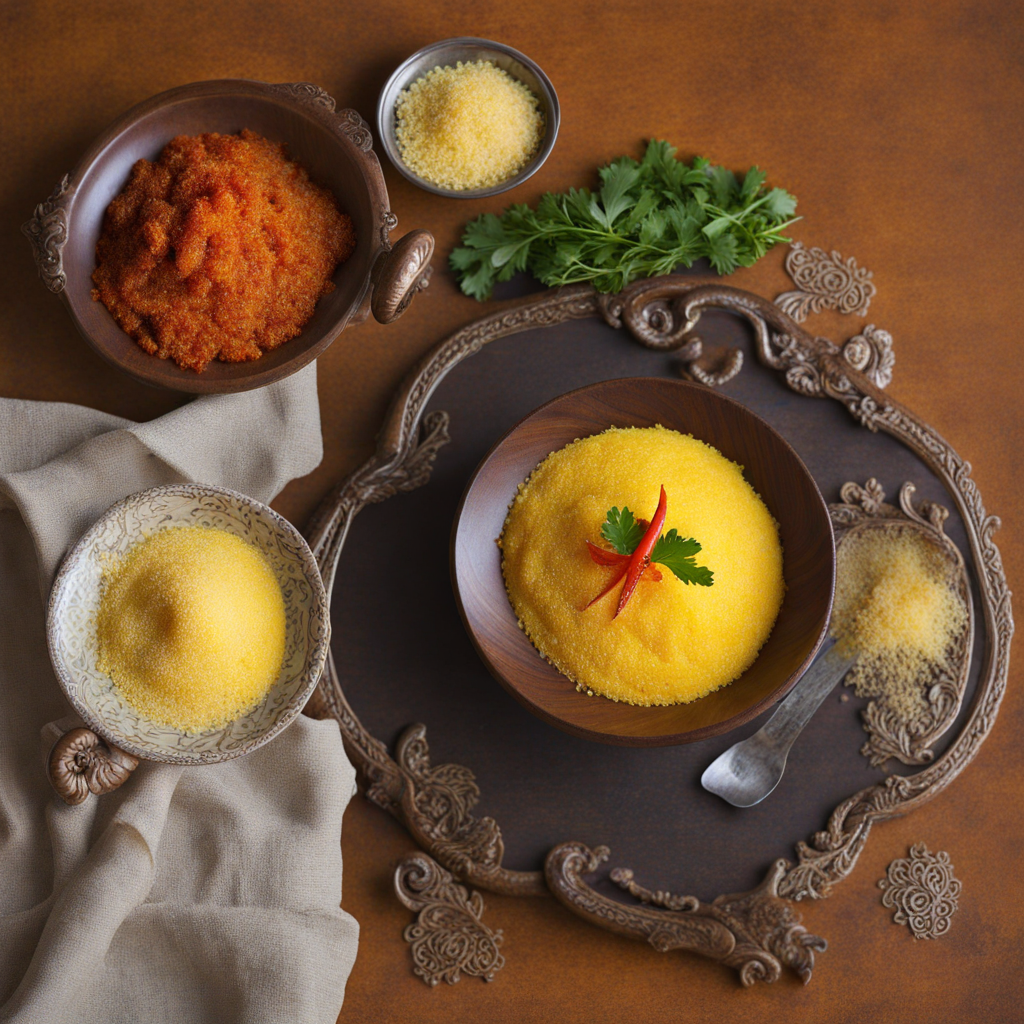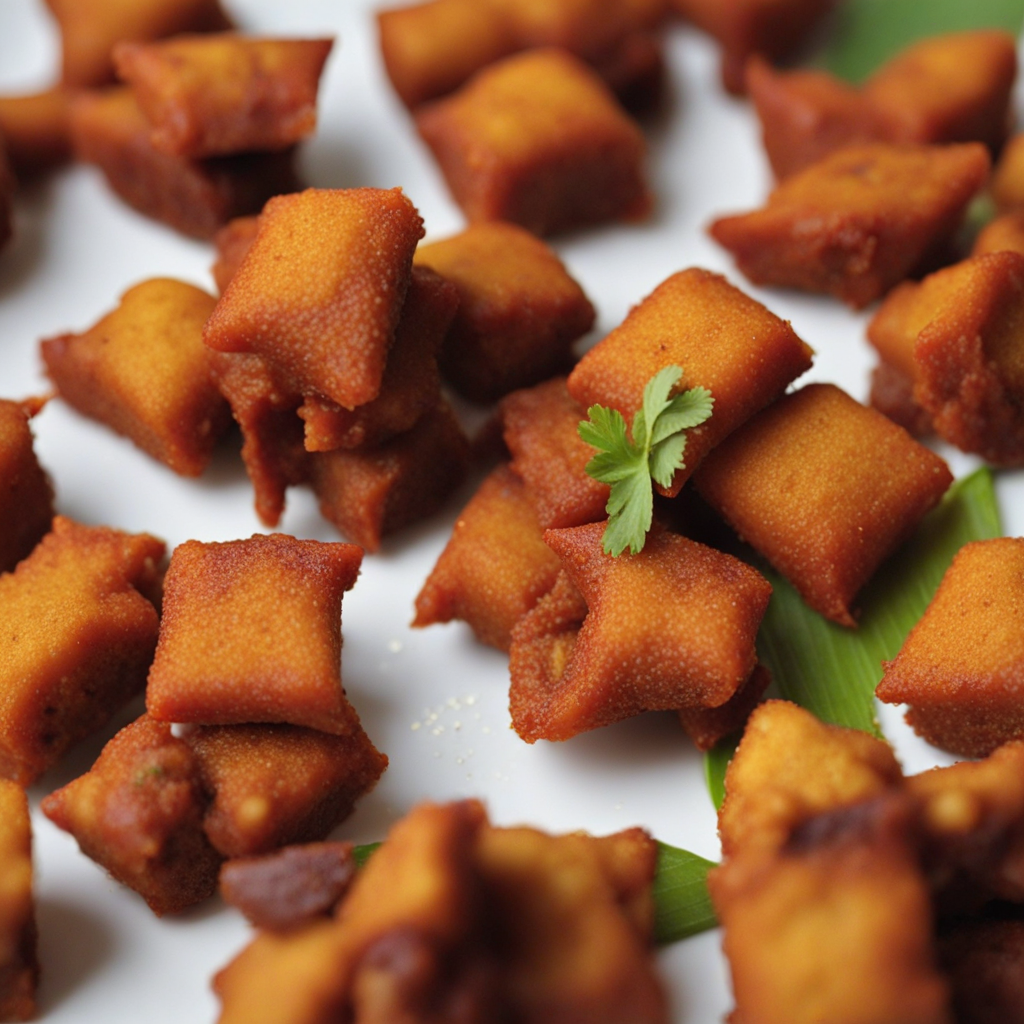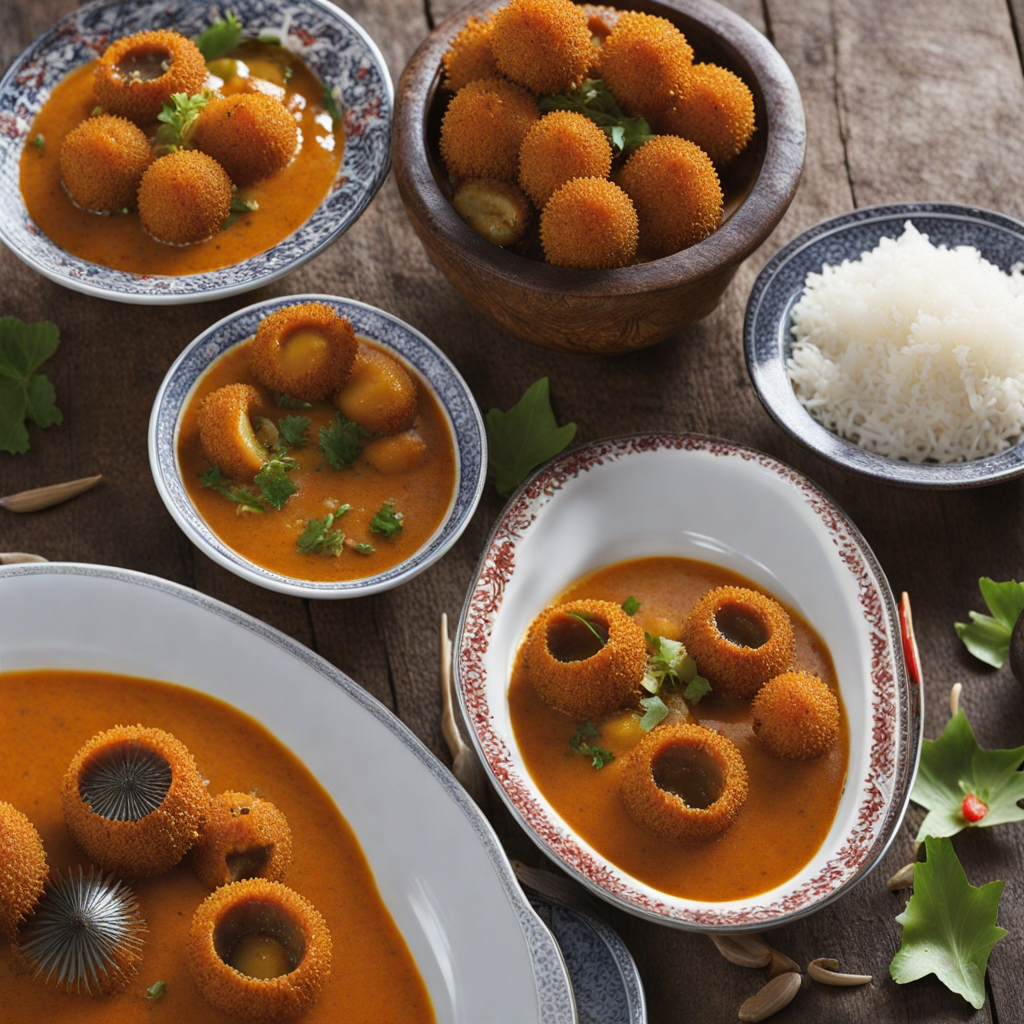Safran Mais
Safran Mais is a delightful Mauritian dish that beautifully showcases the island's rich culinary heritage. At its core, this dish features corn, which is often regarded as a staple ingredient in many tropical cuisines. The corn is typically cooked until tender, allowing its natural sweetness to shine through. What sets Safran Mais apart is the infusion of saffron, a luxurious spice known for its vibrant color and unique flavor profile. The saffron brings a subtle aromatic quality that elevates the dish, creating a harmonious blend of sweet and savory notes. In addition to corn and saffron, Safran Mais often incorporates a medley of spices and herbs that reflect the diverse influences present in Mauritian cooking. Ingredients like garlic, onion, and a variety of local spices are sautéed to create a flavorful base, while fresh herbs like cilantro or mint add brightness and freshness to the dish. This combination not only enhances the taste but also contributes to the visual appeal, with the vibrant yellow of the saffron and the green of the herbs creating an enticing presentation. The texture of Safran Mais is another highlight; the corn kernels provide a satisfying bite that contrasts with the smooth richness of the saffron-infused sauce. Served warm, it can be enjoyed as a side dish or a light main course, often accompanied by grilled meats or seafood, making it a versatile addition to any meal. With its unique blend of flavors, aromas, and colors, Safran Mais offers a delightful culinary experience that invites food lovers to explore the vibrant tastes of Mauritius.
How It Became This Dish
The Golden Splendor of Safran Mais: A Culinary Journey through Mauritius Mauritius, an island nation nestled in the Indian Ocean, is renowned for its rich and diverse culinary heritage, which reflects its complex history of colonization, migration, and cultural exchanges. Among the myriad of dishes that grace Mauritian tables, 'safran mais' stands out as a vibrant and flavorful emblem of the island's unique gastronomic identity. This dish, which translates to 'saffron corn,' is a delightful fusion of flavors and techniques that encapsulates the spirit of Mauritius. Origins and Ingredients The origins of safran mais can be traced back to the island's agricultural practices and the intermingling of various cultural influences. The primary ingredient, corn (or maize), was introduced to Mauritius in the early 17th century with the arrival of the Dutch, who initially brought it to the island for cultivation. Corn quickly adapted to the Mauritian climate and became a staple crop, forming the basis of many traditional dishes. The term 'safran' in safran mais is somewhat misleading, as it actually refers to the vibrant yellow color of the dish rather than the expensive spice saffron. The yellow hue is typically achieved through the use of turmeric, another staple in Mauritian cuisine. Turmeric, known for its health benefits and culinary versatility, has been used in the region for centuries, influenced by Indian cooking traditions brought by indentured laborers in the 19th century. Cultural Significance Safran mais is more than just a dish; it is a symbol of the cultural fusion that defines Mauritius. The island's population is a melting pot of ethnicities, including Creole, Indian, Chinese, and French, each contributing their flavors and culinary techniques to the local cuisine. Safran mais embodies this diversity, merging indigenous ingredients with influences from Indian and French cooking. In Mauritian households, safran mais is often prepared for special occasions, family gatherings, and festive celebrations. It is a dish that brings people together, often served alongside curries, grilled meats, or as a standalone item during a banquet. The preparation of safran mais can also be seen as a communal activity, with family members gathering to share stories and laughter while cooking. Development Over Time As Mauritius evolved, so too did the preparation and presentation of safran mais. In its traditional form, safran mais is made by cooking corn kernels with spices, turmeric, coconut milk, and often garnished with fresh herbs. The dish is typically served warm, and its comforting texture and rich flavors have made it a beloved staple in many households. In recent years, the dish has seen a resurgence in interest as chefs and home cooks alike explore the depth of Mauritian cuisine. The rise of culinary tourism has prompted restaurants to feature safran mais more prominently on their menus, often presenting it in innovative ways that maintain its essence while appealing to contemporary palates. Chefs experiment with variations, incorporating local seafood, spices, and even international influences, showcasing the adaptability of this traditional dish. Moreover, safran mais has become a focal point in the quest for culinary authenticity and heritage in Mauritius. As younger generations become increasingly interested in their roots, there is a renewed emphasis on preserving traditional recipes and cooking methods. Community cooking classes and food festivals highlight safran mais, allowing both locals and tourists to engage with the dish's history and significance. Safran Mais in the Global Context As globalization continues to shape culinary landscapes, safran mais has begun to find its way beyond the shores of Mauritius. The diaspora of Mauritians around the world has led to the dish being adapted and introduced in various countries, particularly in regions with significant Mauritian populations such as France, the UK, and Australia. This transnational culinary journey serves as a testament to the resilience of cultural identities and the ability of food to transcend borders. In countries where Mauritian communities thrive, safran mais is often featured at cultural festivals, bringing together generations of families and individuals who celebrate their heritage through food. The dish serves as a reminder of home, evoking nostalgia and a sense of belonging, while also inviting others to experience the unique flavors of Mauritius. Conclusion Safran mais is not merely a dish; it is a vibrant narrative woven into the fabric of Mauritian culture. Its origins reflect the island's agricultural history and the influences of various ethnic groups, making it a symbol of unity in diversity. As it evolves and adapts to contemporary tastes, safran mais continues to be a beloved comfort food for many, embodying the warmth of family gatherings and the spirit of celebration. Whether enjoyed at a bustling family feast or served in a chic restaurant, safran mais remains a testament to the enduring connection between food and culture in Mauritius. As the world continues to embrace culinary diversity, this golden dish invites everyone to savor not just its flavors, but also the rich history and cultural significance it carries. In every bite, one experiences a taste of Mauritius—its past, its present, and its future—making safran mais a true culinary gem of the island.
You may like
Discover local flavors from Mauritius







